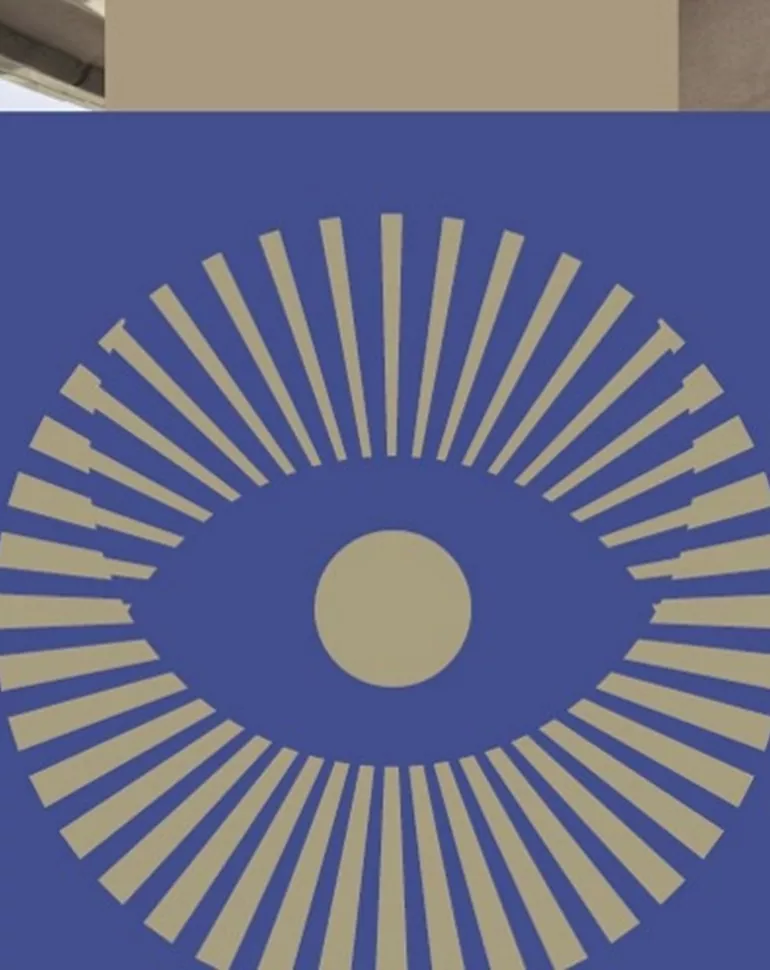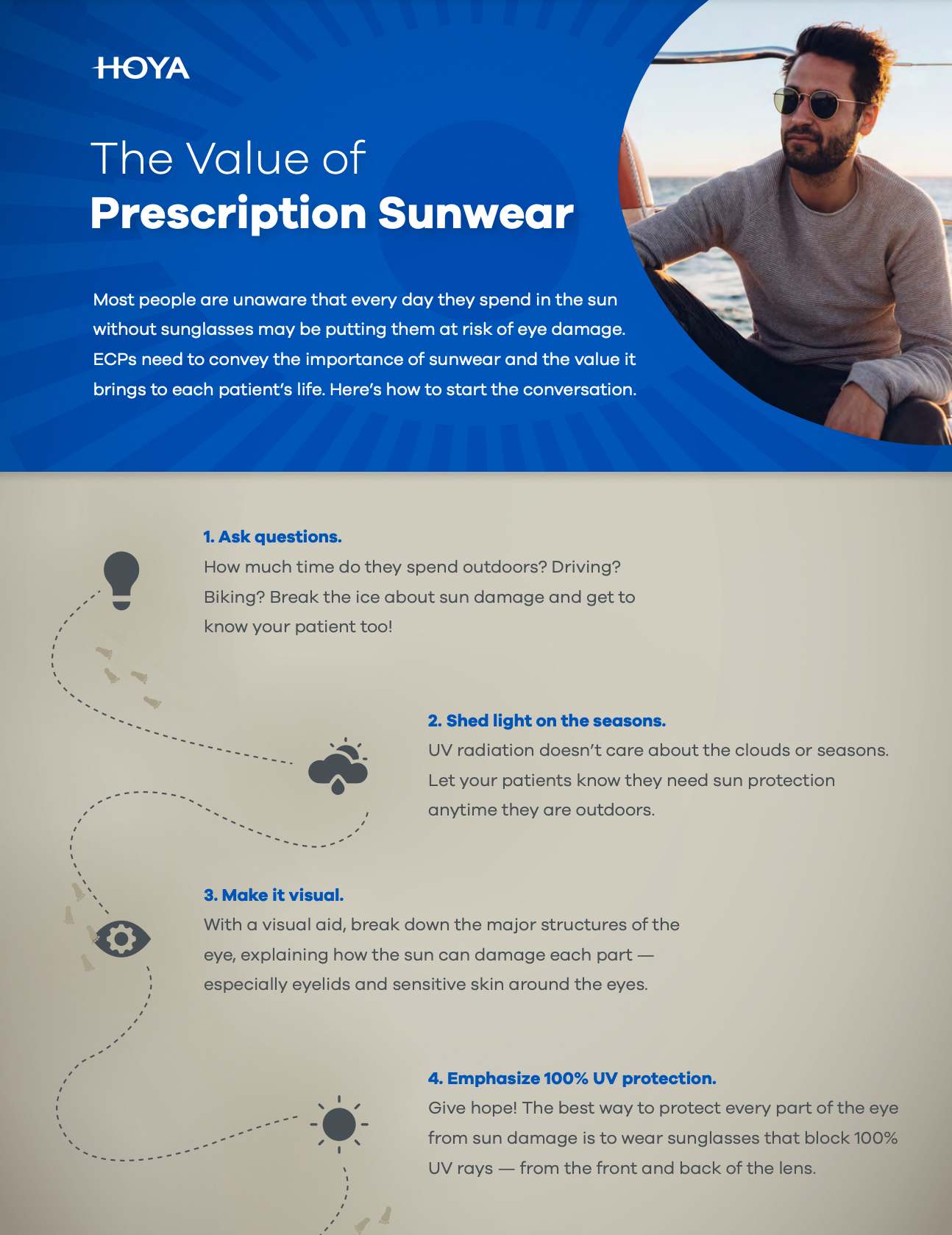Millions of people — including many of your patients — could benefit from prescription sun lenses. The problem is, 36 million of those people do not have them and are unaware they need them in the first place.
In the U.S. independent market, consumers purchase 93 million pairs of prescription eyeglasses annually, but only about 3 million are prescription sun lenses. This means that an overwhelming majority of your patients are probably experiencing discomfort outdoors and could use your recommendations.
We know that wearing sun lenses will positively impact your patients and help you increase sales, which will benefit your practice. However, many ECPs are missing out on this conversation with their patients for two main reasons:
- They don’t feel comfortable with the “upsell”
- They aren’t sure how to start the conversation
Patients are unlikely to bring up the topic of prescription sunwear because again, they’re either unaware they need it, or they believe in certain misconceptions around prescription sunwear. It’s up to the ECP to start the conversation and debunk the myths that surround this eyewear necessity. And this is for the sake of your patients’ eye health and the growth of your practice — both go hand-in-hand.
Here’s how you can start and continue the conversation around prescription sunwear with your patients.
Start with your questionnaire or ask questions mid-exam
Getting the conversation started is often the hardest part for eye care providers. Your first ideal opportunity is at the very beginning of the appointment when you can refer to the patient questionnaire: “I see you’re outside fairly often and not wearing prescription sunglasses.” The questionnaire takes care of that first step and gets you in the door to have the conversation.
If you don’t have a patient questionnaire to work with from the start, the second opportunity comes in during the slit lamp part of the exam. This is when you can start to pick up on changes in the anatomy of the eye, which is a good moment to talk about the sun. Bringing up the topic of prescription sunwear like this feels a lot more natural and won’t feel like a hard sell.
Ultimately, get to know your patient’s lifestyle. It helps to already have questions on the intake form, but you can use this time to ask questions and paint the picture of your patients’ daily lives.
Get real about sun damage to the whole eye
Most people are unaware that every minute they spend in the sun without sunglasses may be putting them at risk of eye damage — possibly even permanent vision loss. To help your patients understand the danger of sun damage, start by breaking down the major structures of the eye, perhaps even using a visual aid. Then, follow up with a brief explanation of how the sun can inflict damage on those parts specifically, from the eyelids, the skin around the eyes, and the front surface of the eye to the lens and retina.
During your patient’s visit, explain that the best way to protect the eyes, eyelids, and skin around the eyes from sun-related damage is to wear quality sunglasses that block 100% UV rays from the front and back of the lens, and also shield the eyes from blue light. Remember: UV radiation can penetrate clouds, so sunglasses are important on overcast and cloudy days as well as sunny days — through both winter and summer.
Read more about how to discuss seasonal sun damage with your patients, in our bog, Winter and sun protection.
Break the news about solar blue light
Your patients probably know about the term “blue light” as it relates to working in front of a screen for hours a day — and that it can cause digital eye strain and a number of other symptoms, such as headaches, tired or burning eyes, and more. However, your patients may not know that blue light primarily comes from the sun (blue light’s number one source), and in fact, 15 minutes in the sun equals 12 hours in front of a screen1.
An estimated 25% to 30% of sunlight consists of solar blue light rays, so you can make an impression on your patients with this info while diving into the harm of solar blue light exposure. Depending on your patients’ activities and work environment, they may consider multiple pairs of glasses — one for computer use indoors and another for outdoor blue light protection.
For more information on explaining the details of solar blue light, download our white paper, Solar blue light technical education.

